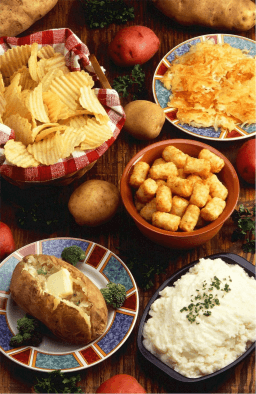Candlemas
(Also known as Feast of the Purification of the Virgin, Meeting of the Lord)
Candlemas is observed next on Monday, February 2nd, 2026 (198 days from today).

Presentation of the Lord or Presentation of Christ in the Temple or Hypapante is observed on February 2nd every year.
About Candlemas Day
Candlemas Day is another name for the Feast of the Lord's Day. Forty days after His birth, Mary and Joseph brought Jesus to the temple to perform the rituals of purification and dedication prescribed by the Torah. According to the Book of Leviticus (12:1-4), when a woman gives birth to a son, she is considered “unclean” for seven days. After some days, the boy was circumcised. The mother continued to stay at home for 33 days for the blood to be purified. After 40 days, the mother and father go to the temple for a purification ritual, which includes the offering of a sacrifice - a lamb for a cremation (cremation) and a dove or roast bird for a sin offering, or for a poor couple who couldn't afford a lamb, two pigeons, or two roosters. Notice how Joseph and Mary offered sacrifices to the poor (Lk 2:24).
In addition, Joseph and Mary following the Torah were forced to “rescue” their firstborn son: “The Lord spoke to Moses and said, ‘Give me every firstborn that has opened its heart among the people. Israel, both man and beast, for it belongs to me'” (Exodus 13:1). The price for such a redemption was five shekels, which the parents paid for the priest. This “redemption” was a form of payment for the Passover sacrifice by which the Jews were freed from bondage.
However, Luke in the Gospel does not refer to this redemption, but to the presentation of our Lord: “When the day came for their purification according to the law of Moses, the couple brought Him up to Jerusalem, that He might be offered to the Lord, for it is written in the law of the Lord: "Every firstborn male is given to the Lord" (Luke 2:22-23). The focus, therefore, is on Jesus' dedication to God. The verb “to present” (paristanai) also means “to offer,” which refers to Jesus being presented as a priest who would offer Himself as the perfect sacrifice for our deliverance from the bondage of sin, sealing the new and eternal covenant with His blood. , and open the gates to the real Promised Land in heaven.
Simeon, a righteous and pious man who was waiting for the Messiah and seeking the consolation of Israel, was inspired to come to the temple. He held the infant Jesus in his arms and blessed God, saying: “Now, master, you can cast out your servant in peace; you have fulfilled your word. For I have seen with my own eyes your work of salvation, reigning unto all nations: a light unto the Gentiles, and the glory of your people Israel” (Lk 2:29-32). Simeon, therefore, announced that the Messiah had come not only to the Jews but also to the Gentiles; not only the righteous, but also sinners.
Then He blessed the Holy Family, and in turn said to Mary: “This child is destined to become the downfall and rise of many in Israel, a sign that will opposed—and you yourself will be stabbed with the sword—so that the hearts of many may be bared” (Lk 2:34-35). He is the light that came into this world to dispel sin and darkness. For this reason, it has traditionally been at least since the seventh century that candles that have been blessed at Mass on this day will be used throughout the year, hence the term "Candlemas".
When we consider the feast of the Presence, we remember that our parents went to church to baptize us. We have dedicated ourselves to God and are named “Christians”. We also received a lit candle from the Paschal candle, at which the priest said, “You have been enlightened by Christ. Always walk like a child of light and keep the flame of faith alive in your heart. When the Lord comes, may you go out to meet Him with all the saints in heaven” (Adults' Christian Initiation Rite). Therefore, as light, each of us must bear witness to our Lord. We must be a beacon leading others to Christ. In addition, we must also recognize that we too will be “a sign that will be opposed,” especially on matters of the sanctity of human life, marriage, and the family.
Two other interesting tidbits highlight the day: First, in many Eastern European countries, the celebration of the Embodiment officially ends Christmas. For this reason, Blessed John Paul II began the custom of keeping nativity scenes in St. Peter's until February 2.
Second, Candlemas Day is also very important in the farmer's life. An old English song is as follows:
“If the Candlemas is fair and bright, / Come, winter, let's take another flight. / If the Candlemas brings clouds and rain, / Go away, winter, and come no more. "
So if the blazing sun "did" the brightness of Candlemas Day, there would be more winter. However, if the light of Candlemas Day shines through the gloom and darkness of the day, winter is near.
History of Candlemas Day
Near the end of winter, as the ancients looked forward to the sowing season of spring, various cultures have found ways to celebrate this change from cold and dark days to a time of joy and fruitfulness during the year. The ancient Celts used this time of year to honor the Goddess Brigid. Brigid is the Goddess of purification and fertility. They will honor her by processing from the village across the fields while praying for the health of their soil before planting. The Romans associated their festival with the god Lupercus. Here is the God of fertility and their shepherds, playing once more with the desire to shed the bonds of winter and bring fertility and light to the time of sowing.
As Christianity was moving around the world, they also decided to celebrate the festival of lights around this time of year. Candles in the Christian tradition are known by two different names - the Feast of Our Lord's Presence and the Baptism of the Virgin Mary. The tradition of churches is to bring all the candles used for the rest of the year for a special blessing.
Symbols of Candlemas Day
Snowdrops (galanthas nivalis) are known as Candlemas Bells because they usually bloom early in the year, even before Candlemas. Some varieties bloom all winter (in the Northern Hemisphere). Superstitious people often believe that these flowers should not be brought into the house before lighting the candles. However, in recent times, it is believed that these flowers help to purify a home.
According to folk legend, an angel helped these Candle bells bloom and pointed them out as a sign of hope to Eve, who was crying in repentance and despair at the cold and death that had invaded her enter the world. Many Christians consider this flower a symbol of Jesus Christ as the hope for the world. Candles lit during Candlestick Feast also represent Jesus as “the light of the world.”
Note: Please note that the seasons and seasonal variations mentioned in relation to Candles refer to the northern hemisphere in this article.
How to celebrate Candlemas Day
How can you jump into the Candlemas Festival? One way to do this is to follow the great tradition of packing all those wonderful decorations that you spent so much time planning and setting up! And don't forget to look under the couch or anywhere your pet likes to collect all the little things that go missing in the house - trust me, you might even find some socks! Don't feel like marching down the street to pray in the fields? How about bringing proverbial light to your home by bringing all your candles into a church to be blessed? Today, many people still do this thinking that this wish will bring prosperity to the house when the candles burn brightly. More blessings can't hurt right?!
Feeling a little more adventurous? How about a leisurely jog with a herd of bulls? In Mexico, during a weeklong religious festival, this is exactly what they do. Not quite your cup of tea? Try to eat crepes or tamales as is the tradition in many countries around the world. Perhaps while you mull over those dishes, you could try writing down some goals for the upcoming year. This is a symbolic act of “planting” when you are performing the starting action of “planting” the result.
Observed
Candlemas has been observed annually on February 2nd.Dates
Friday, February 2nd, 2024
Sunday, February 2nd, 2025
Monday, February 2nd, 2026
Tuesday, February 2nd, 2027
Wednesday, February 2nd, 2028


